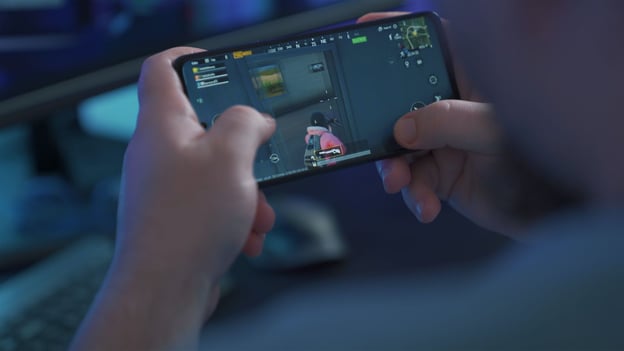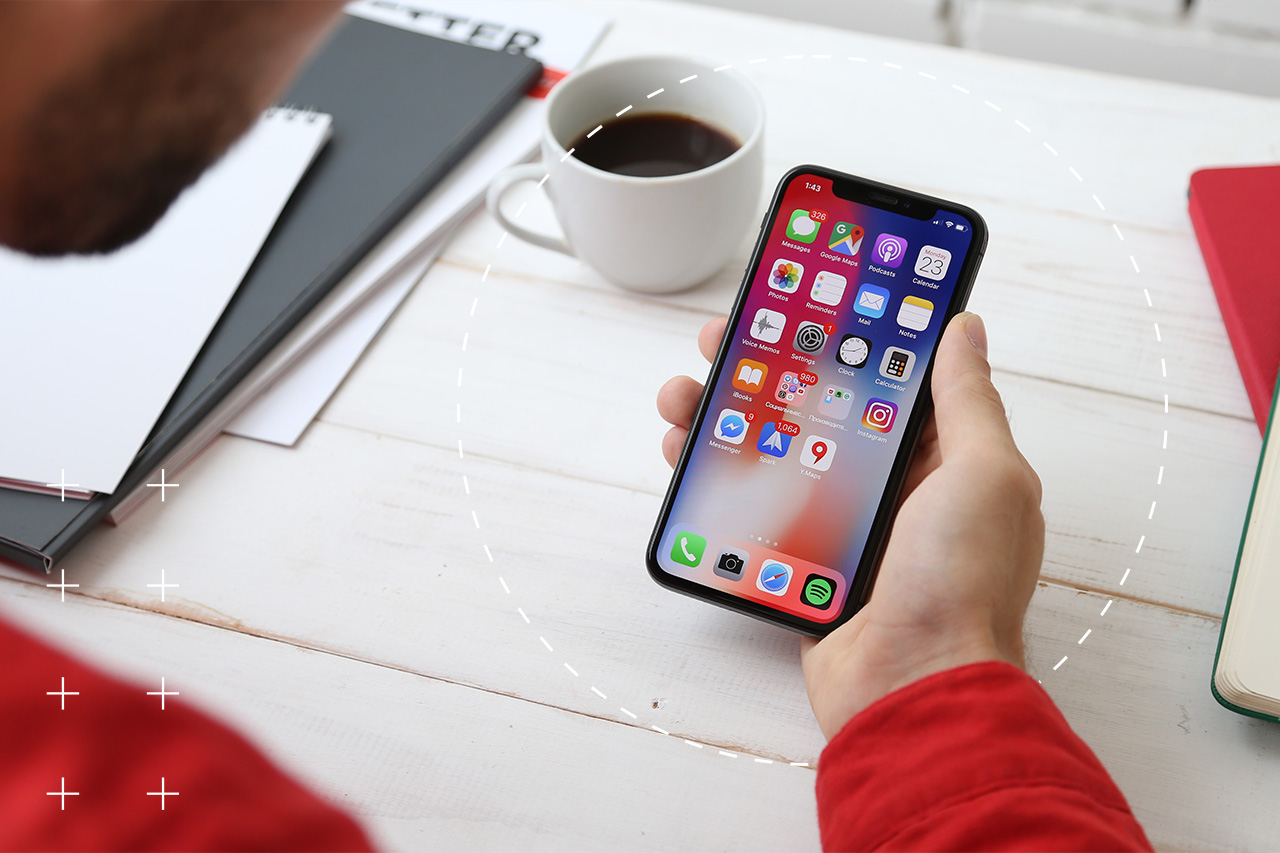The mobile game market is in flux and mobile game marketing strategy is changing. Read on to find the strategies with the highest ROAS.
These mobile game marketing strategies will help you gain new high-LTV users.

Mobile game marketing strategy is in flux following the death of IDFA. UA marketers have gotten creative when it comes to tracking and attribution, but CPIs continue to balloon on mainstream channels. To mitigate losses, advertisers are exploring alternative tactics, including connected TV, App Store ads, influencer marketing, pre-registration campaigns, and more. Here’s what the most effective mobile game marketing strategies look like today.
Take your knowledge to the next level with Video Game Marketing: The Complete Guide.
Mobile Game Marketing Starts in the App Store
When deciding how to market a mobile game, UA marketers must consider a few staple user acquisition methods, including App Store search ads. The method is simple. If a user searches for an app similar to the one you’re advertising, your mobile game will appear as a suggestion under the search bar, promoting your game as a top result. It’s effective because it captures impressions from people actively searching for an app similar to the one that you’re offering.
The average CPA for a game on the App Store is $1.69. It’s difficult to calculate an exact ROAS with so many potential factors affecting costs, but using the 4:1 benchmark, you want to aim for around $6.76 in revenue for each action. When you use App Store search ads, you’re essentially selling as if you have a lead versus making cold calls. Users are more likely to engage with your store page, download your app, and make a few purchases — thus resulting in lower UA costs — if you provide them with a product that they’re interested in.
App Store Optimization Is Worth the Investment
One in four users discover new apps through App Store or Play Store search. Put simply, optimizing your app to appear higher on the results is a surefire way to capture more installs. There are services available online, like Sensor Tower, that can help with this process, but the fundamentals of ASO aren’t difficult to learn.
ASO works similarly to SEO: You want to target relevant, low-competition keywords while also adding in high-quality media. Preview videos, high-resolution images, descriptive titles, and error-free description copy all go a long way to help your app appear towards the top of the search results. These minor improvements, when used together, will go a long way. The best part is that app store optimization doesn’t rely on ad spend, so the only investment is time.
Pre-Registration Campaigns Draw High-Quality Users
Released in September 2020, Genshin Impact has become one of the most popular games in the world. Genshin Impact currently boasts nearly 5 million monthly active users across Apple and Android devices. These stats are only part of the story, though, as Genshin Impact’s journey to the top of the charts began well before it was ever released. Developer miHoHYo ran an aggressive pre-registration campaign to attract users in the lead-up to launch, earning just under 8 million MAU during its first month on the app store.
As players pre-registered, they filled a global progress bar that unlocked tiered rewards at various milestones. In the end, miHoYo smashed its goal of 3 million pre-registrations, with 10 million registrants ultimately signing up before the title was released. While these numbers are impressive, it’s not just the sheer size that matters; it’s the quality of players they represent. Genshin Impact players demonstrate unusually high engagement; 23% play between 1-10 hours a day. To date, Genshin Impact has made more than $3 billion against a $100 million advertising and development budget.
Genshin Impact is a goliath of a gacha game. The pre-registration campaign hardly accounts for all its success, but its mobile game marketing strategy is one worth dissecting. Developer miHoYo was able to start a conversation about the product well before its release and offer a tangible reward to those that shared interest. In doing so, it earned more coverage from headlines at top gaming outlets — crucial exposure that comes at the low, low cost of free. Most games won’t have miHoYo’s budgetary resources — Genshin Impact got plenty of flashy trailers ahead of launch — but marketers should still apply these concepts for a high ROAS.
Even if you don’t have the same raw advertising budget, tactics like pre-registration campaigns jump start conversations about your game and expose it to a broader audience. These campaigns don’t even have to happen before launch. World of Warcraft’s recruit-a-friend program exemplifies how such a tactic can become a reliable user acquisition channel when a game goes live.
Influencer Ads Have Huge Payoffs
89% of marketers say that influencer marketing is as effective or more effective than traditional marketing strategies, and 71% say that the quality of users coming from influencers is higher than other channels. However, it falls to marketers to find the right fit when working on influencer-driven mobile game marketing campaigns.
To find the right influencer, look to their fans. If their audience aligns with your target demographic, you can start looking at more detailed data to determine whether or not they’ll bring value to the table. How well do they engage with their viewers? How big is their audience? Finding an influencer that has a lot of sway but a small audience can be more valuable than finding someone with a large audience that is unable to motivate desired behaviors.
Working with influencers is about trust. You should have a good grasp of their numbers, and they should have a clear idea of how much they’ll be paid and when.
CTV Is Your Best Bet for ROAS
In just a few years, connected TV has transformed the user acquisition landscape. CTV’s reach is growing at an unprecedented rate: By 2023, 82% of US households will rely on connected TVs for entertainment. The channel’s scale is matched by the precision of tools available. CTV allows UA strategists to deploy programmatic advertising that fits a defined set of ultra-specific goals, ensuring that marketing stays effective and on budget.
For user acquisition, the key value proposition behind CTV is its cost-effectiveness. On tvScientific’s platform alone, we’ve observed an average CPI of $1.90 across a data set of more than a million gaming installs. On average, gaming marketers see a Day 7 ROAS of 1.25X. Major publishers including Kabam, Wildlife Studios, Big Fish Games, and more have already taken note, dedicating significant budgets to CTV campaigns.
Mobile Game Marketing Campaigns That Work
Even in a privacy-centric consumer landscape, app marketers have a myriad of cost-effective solutions at their disposal. The key is to routinely test emerging channels, rather than defaulting to what’s worked historically.
Interested in test driving connected TV? tvScientific is the premier performance TV platform. We help our partners accrue high-value installs and provide intelligent attribution with always-on incrementality testing. Contact us today to learn more.








